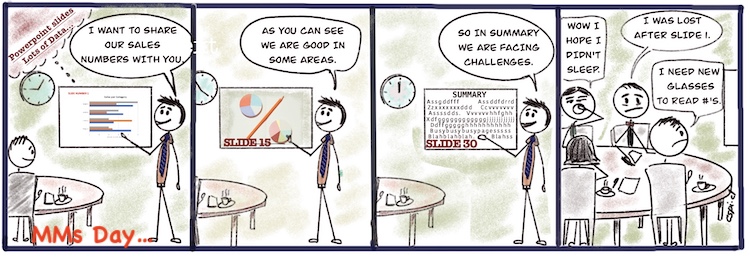I am sharing four ideas that do not appear in all the many blogs on presenting.
I believe that these ideas, added to the advice on slide typeface size, number of words, use of pictures and visuals, 3 minutes per slide, knowing your audience and keep it simple, are really helpful. These elements can be found easily on the internet.
The four ideas are:
1. Happy Birthday, louder, slower
2. Listen to you vs read the slide
3. The story of the data
4. Be authentic
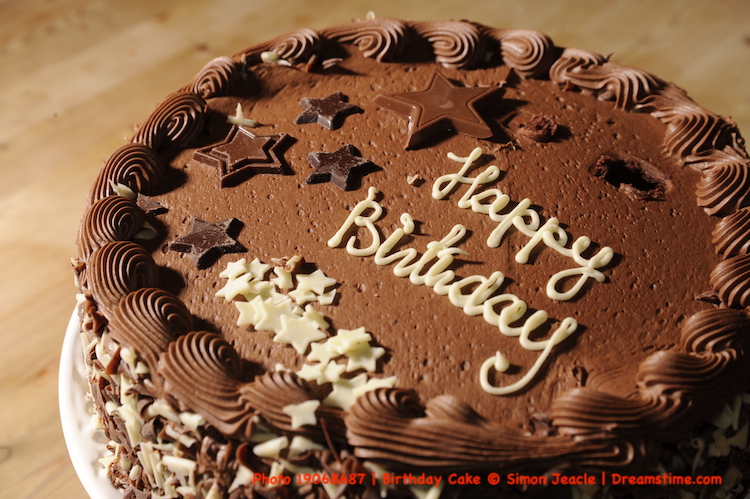
I was taught a long time ago by a presentation coach that , when nervous before a presentation to management, men tend to start off using a deeper than normal voice, speak softly and fast.
On the other hand women, when nervous, tend to speak with a higher pitch, speak softly and fast.
The objective is to start speaking at the right pitch level. That level is the same as the first notes of “Happy Birthday”. Quietly, to yourself set your pitch to the same as those starter notes. When you start speaking make sure that that is the pitch.
To overcome speaking softly, speak louder than you normally will. That will come across as confident and will be heard by all in the room or on the ZOOM-type call. You are not shouting! In a physical setting the voice level should be sufficient to be clearly heard by those who are furthest away at the back of the room. On a ZOOM cal ensure that your mike is sufficiently close to your mouth and not rubbing against your clothes.
Finally speak slower than is usual. “Good morning” comprises two distinct words. Do not run them together “goodmorning.” Give thought to how you will open the presentation. Possibly “Good Morning – pause – today I am going to share with you (each word distinct) the results of a customer survey. Pause. Slide 1.
Listen to you vs read the slide
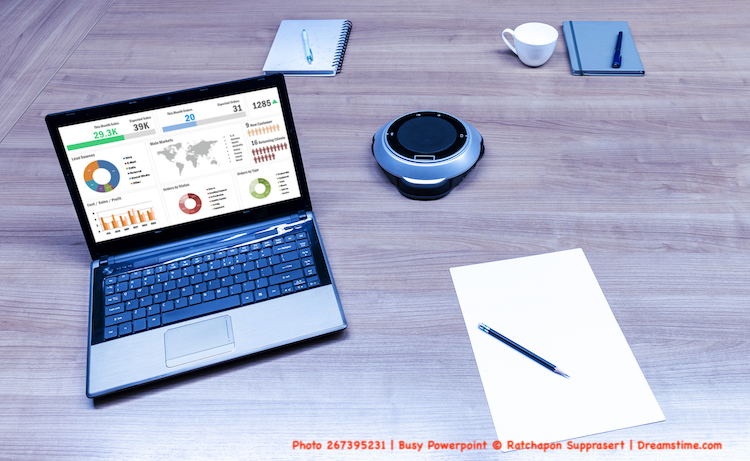
Slides must never distract the audience from what you are saying. Maybe slide 1 has three words and a number: Customer Survey March, 2023. You will continue in your slow, louder, correct pitch voice until the middle of what you are saying that is prompted by you first slide. DO NOT READ the slide. You might say “In January we saw that we were losing market share to competitor x. We knew we had to hear from our and their customers so that we could take action. We have discovered some interesting data that will help us regain our lost share.”
You can note that the audience are listening to you and not getting lost in the slide. By the end of the slide you can be speaking a little faster but keep the pitch the same and the loudness sufficient so that the audience does not have to struggle to hear you.
I am guilty of speaking too quietly sometimes (mumbling my wife says) when presenting. I ask my business partner to prompt me if that happens. You might do the same.
The Story of the data
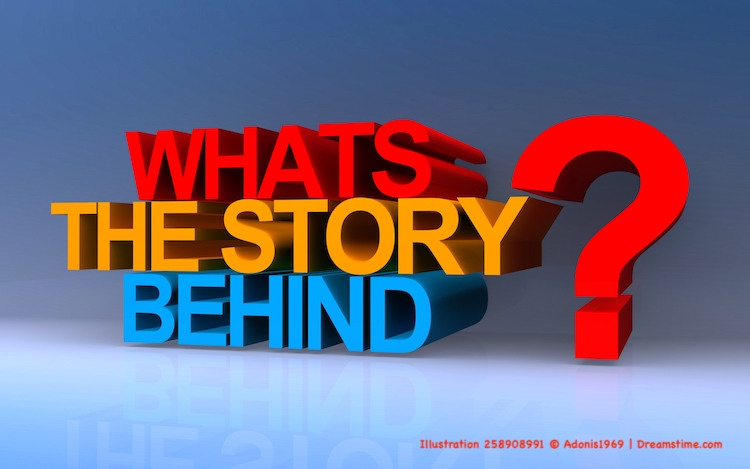
Data needs to be converted into information. Information needs to carry a story. To show a slide that indicates that sales have risen for the last 6 months you might choose a simple chart with the line ascending. To say “sales have risen at x% each month” is not very useful. The audience can see that from the graph. What is interesting is the “why?” behind the data, “Will it continue into next month?”, “can the growth be faster?”
Answering those questions is the meat of the presentation for that sales slide. And the words come out of your mouth, not written on the next slide!
I once saw a slide as part of a presentation that consisted of a single data point. The presenter had made a bar chart. Single bar. Single data point. And no story. Pretty slides are not a substitute for a real story. In this case, if the number was important it could be a slide with a single number. Let’s say: 23%. You as the speaker might say “This number is very worrying. It is the percentage of our clients who did not renew their subscriptions. And the main reason which we have discovered through our client surveys is the difficulty of using the app.” “Next slide (which has bullet points each with one or two words) names the three biggest pain points”
Because there are so few words, there is no distraction. Also the audience has to listen to you, the presenter, as the one or two words do not tell the story. Only you do.
Be Authentic
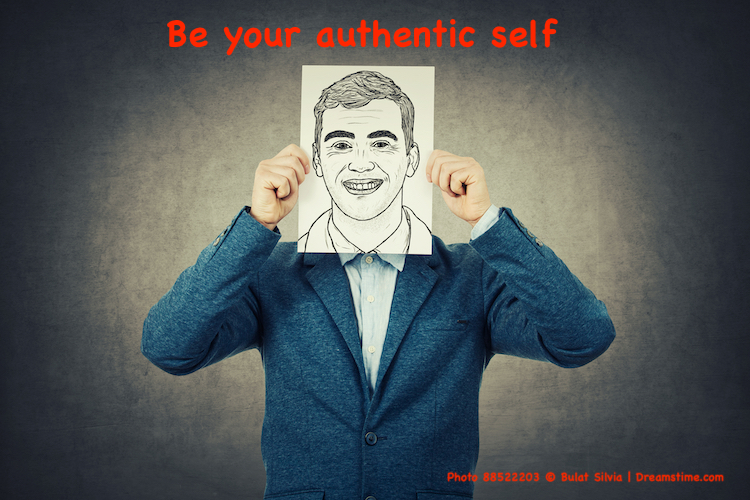
I was waiting for a friend to find a book in the university library. The library was in the form of a cross and I was standing at the point of intersection. I could see signs for all the different sections – Anatomy, Economics, Geography, Communications, Digital Science and on and on. I wondered what the library would look like if I did a brain dump of everything I knew about everything. Under “Denis Wisdom” category I pictured a couple of books sitting alone surrounded by empty shelves.
My point is that we do not know everything. Even on subjects that we know a lot about, we do not know everything.
In presentations we can be asked questions to which we do not know the answer. Do not wing it, make up a possible answer or pretend that you know the answer. Simply say “I do not know the answer to that question. I will find it out. Thank you for asking.”
That is what is meant by being authentic. You are who you are. Your wisdom is limited. Just be that person.
The same applies if you present some information and someone points out that it is incorrect. Assuming the feedback is accurate, just say, “thank you, I will correct that.”

